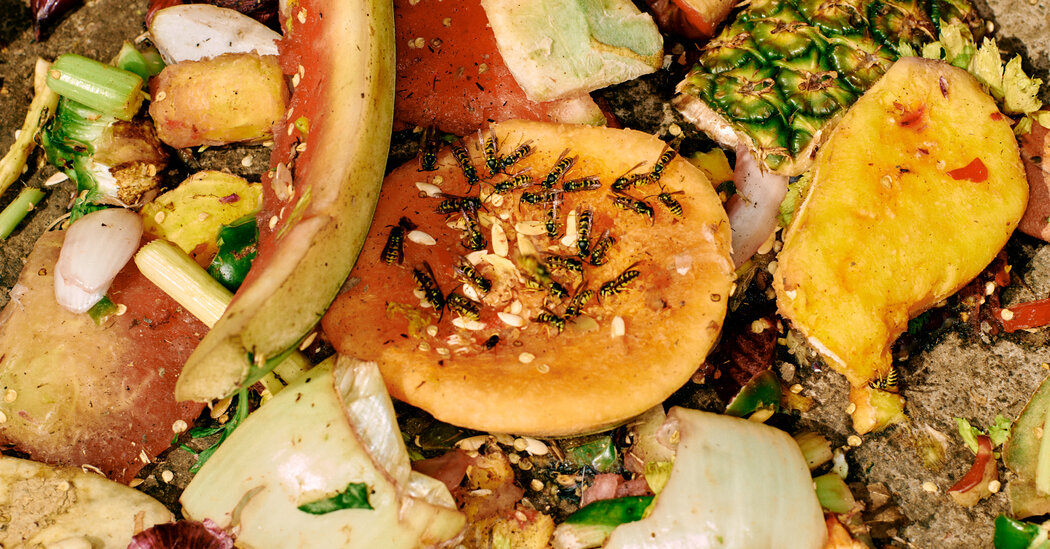What is compostable? How Americans are using technology to stop wasting food, but not before giving it to someone else: A case study in Brooklyn
She had to take a shopping cart with her for hamburger buns and cookies. She knew there was more to come. Within minutes, she had persuaded the staff members to give her several crates of milk marked “best by” the next day, as well as buttermilk and boxes of brussels sprouts, kale, cilantro, cut melons and corn. She nudged them: Are there eggs?
With warming planet in mind, a few states and cities have enacted regulations aimed at keeping food out of landfills. Most require residents or businesses to compost, which releases much less methane than food dumped in landfills. California recently passed a law requiring businesses to give away food they would otherwise throw out.
Amid the growing urgency to slow global warming, governments and entrepreneurs are coming up with different ways to waste less food. One starts-up makes it easier for people to buy misshapen produce that grocery stores don’t want, and another builds an invisible coating on fruits to make them last longer. A solar-powered fridge has been built to help farmers store produce longer.
New mobile apps in Asia, Europe and the United States offer discounts on restaurant food that is about to be thrown out. Last year, China’s top leader, Xi Jinping, began a “clean plate” campaign, calling for an end to the “shocking and distressing” squandering of food, even cracking down on video bloggers who eat excessive amounts of food on camera.
I recently hosted a backyard barbecue at my apartment in Brooklyn. I put out three containers for waste: A trash can, a recycling bin and a compost bin. As my friends helped me clean up at the end of the night, I learned that we had very different ideas of what was compostable. Vegetable scraps? Definitely compostable. But what about meat? Used paper plates? What about paper towels?
This is no easy feat. Despite decades of haranguing, Americans are still terrible at recycling. And the reasons people waste food are much more complex than the reasons they throw water bottles in the wrong bin: They forget the spinach in the fridge and get more; they buy avocados that go bad before they get eaten; they cook a huge holiday spread to show love to friends and family and then can’t finish it all. As Dana Gunders, executive director of the nonprofit ReFED, points out, one-third of the food in this country goes unsold or uneaten — evidence of a culture that takes abundance for granted.
When Halloween is coming, everyone is going to grab whatever is a snack size and that is your one day to be treated like an adult. We’re saying that there are other 362 days a year. It is possible to have this from a sweet-toothed perspective. And I think it’s just something that could be nostalgic for that next generation.”
Not only are most Halloween favorites not good for children’s health, but many candy ingredients are sourced through processes that harm the planet. It is very common to find cocoa grown in rainforests that are clear cut for farming. Producing unsustainable can cause big amounts of planet-warming gas.
Amy Keller says she has a solution. Keller is a member of the Spangler Candy family — the company behind iconic treats like Dum Dums Lollipops. She is putting a new spin on the family business by attempting to tackle children’s nutrition, global food waste and the climate crisis with Climate Candy.
The plant-based, crisp FAVES are made from fruits and vegetables that include apple juice, sweet potato powder, rice flour and more. Each pack of FAVES includes four different types of fruits and vegetables, which would otherwise be thrown away. It includes carrots, beets, sweet potatoes, squash and pumpkin — all nutritious superfoods — and comes in flavors like cherry, orange, lemon and strawberry.
With Halloween approaching, Keller said Climate Candy would be a valuable add to the trick-or-treat bags — but she also envisions the treat as a healthy alternative to traditional candy year-round.
What Are the Best-Looking Fruits and Vegetables? How Good Are They? An Empirical Study of Green Menus in Fast Food Restaurants
The best-looking fruits and vegetables typically end up in the grocery stories. They fit the shape and dimensions of fruits and vegetables in stores and consumers want fruits and veggies that are similar to one another.
There is a second tier of produce that ends up being unharvested, put back in the land, or sent to livestock feed or landfills. The fruits and vegetables are very good.
People choosing from menus with high climate impact labels were 23% more likely to opt for a more sustainable meal than those with a control menu, the researchers found. Those choosing from menus with green low climate impact labels were 10% more likely to go for a more sustainable option.
To try to help fill that gap, researchers conducted randomized clinical trials asking more than 5,000 adults in the US to imagine they were in a fast-food restaurant, and pick an item from a menu with options including beef, chicken, fish, plant-based meat substitutes and salads.
But, she added, these may not be the only effective design. “Other future research could be required to investigate different design options that may have a higher impact still using that positively framed label.”
